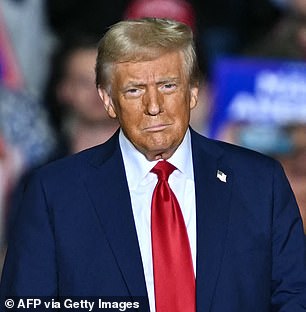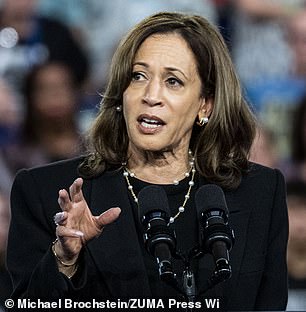Why are US elections always held on the first Tuesday of November?
Have you ever wondered why Election Day in the United States always falls on the first Tuesday in November?
The answer to why this seemingly arbitrary date was chosen can be explained by the lifestyle of the average American farmer in the nineteenth century.
States used to hold elections whenever they wanted, within 34 days before the first Wednesday in December. But because early voting states could sway opinions and influence turnout, Congress intervened in 1845 to standardize the process.
Lawmakers had to consider a number of things before choosing an old date to hold the election.
About the beginning of the nineteenth century 75 percent of Americans worked on farms in rural areas far away from their polling stations.
Voters wait in line at a polling location in Missouri on October 31

Farmer in a vegetable field with a box of produce, showing the productivity and diversity of his farm in northern Wisconsin, circa 1895
That’s in stark contrast to the way the country’s population is divided today 14 percent of people live in rural areas.
Because most Americans at the time lived so far away from their voting location, lawmakers wanted to give them at least a day or two to travel back and forth.
Weekends didn’t work because religion was an extremely important part of American culture, with most people going to church on Sundays.
Likewise, Wednesday was not ideal as it was market day for farmers, when they traveled to the nearest town to sell their produce, meat and eggs.
Tuesday was eventually chosen as the most convenient day of the week to hold elections, and in 1845 Congress passed a law declaring the first Tuesday after the first Monday in November as Election Day.
But why November? Once again, lawmakers targeted the agricultural-dominated workforce.
Spring and early summer were the planting season, and in late summer and early fall farmers were busy harvesting their crops.
Winter was clearly not a good time to hold elections, as it was much more difficult to travel in the cold in an era before cars and well-paved roads.


Now, 179 years and 44 presidential elections later, voters will go to the polls to pull the lever for Donald Trump or Kamala Harris on the very same day in November that Congress has designated.
Therefore, November, which fell immediately after the autumn harvest, was chosen as the most optimal time for Election Day.
Now, 179 years and 44 presidential elections later, voters will go to the polls to pull the lever for Donald Trump or Kamala Harris on the very same day in November that Congress has designated.
Numerous other changes were made to American elections after 1845, the most consequential of which were changes to the Constitution.
For example, black men were officially given the right to vote in 1870 through the 15th Amendment, although Jim Crow laws in the South were notorious for suppressing the rise of African Americans.
Women would later gain the right to vote when the 19th Amendment was ratified in 1920.
And before 1913, the average American voter did not choose their senators. Instead, state lawmakers chose who would represent the state in the U.S. Senate.
The 17th Amendment changed this and also allowed governors to appoint senators in case they die or leave office before their terms expire.
